Daily Current Affairs and GK | 23 October 2020

Main Headlines:
- 1. ECI forms a committee to study issues related to expenditure limits.
- 2. NASA’s OSIRIS-Rex spacecraft briefly touches asteroid Bennu.
- 3. Union Minister of Science and Technology and Earth Sciences launches DME fired “Aditi Urja Sanch” unit.
- 4. State of Global Air 2020 (SoGA 2020), a new global study, released by HEI.
- 5. Ministry of Home Affairs allows OCI and PIO card holders to visit India.
- 6. Mandi district of Himachal Pradesh tops the list of 30 districts successfully implementing PMGSY.
- 7. Labour Minister releases new series of CPI-IW.
- 8. Members of European Parliament advise France and EU to impose sanctions on Pakistan.
- 9. Scientists discovered a new set of salivary glands in humans.
- 10. IAF first Woman officer passes away.
- 11. Dr. Saman Habib elected as a fellow of Indian National Science Academy.
- 12. Union Minister of State for Culture and Tourism launches “Life in Miniature” project.
Happy New Year get 35% Off
Use Coupon code NY2026
1. ECI forms a committee to study issues related to expenditure limits.
- Election Commission of India has formed a committee comprising Harish Kumar and Umesh Sinha to study issues related to expenditure limits of candidates.
- The committee has been constituted to study issues related to expenditure limits of candidates because of increased number of electors (persons having the right to vote in elections) and increase in Cost Inflation index.
- The committee comprising Harish Kumar and Umesh Sinha will submit its report within 120 days of its formation.
- Harish Kumar is an Ex. IRS officer and served as DG (Investigation). Umesh Sinha has served as Secretary General and DG (Expenditure).
- The number of electors (persons having the right to vote in elections) has increased from 834 million in 2014 to 910 million in 2019 to 921 million now.
- Cost Inflation Index (CII) has increased from 220 in 2013-14 to 280 in 2018-2019 to 301 in June 2020. CII measures notional (estimated) increase in asset value caused by inflation.
- Earlier, Minister of Law and Justice amended Rule 90 of Conduct of Elections Rules, 1961 and increased expenditure limit by 10%. Increased expenditure limits will apply to upcoming elections with immediate effect.
- Election Commission of India (ECI):
- ECI is an autonomous constitutional body consisting of a Chief Election Commissioner (currently Sunil Arora) and two Election Commissioners (currently Sushil Chandra & Rajiv Kumar).
- Articles 324 to 329 of the Constitution provide for the powers, functions, tenure, eligibility, etc. of the Election Commission and its members.
2. NASA’s OSIRIS-Rex spacecraft briefly touches asteroid Bennu.
- NASA’s OSIRIS-REx (Origins, Spectral Interpretation, Resource Identification, Security, Regolith Explorer) spacecraft has briefly touched asteroid Bennu.
- NASA is studying Bennu, which is an asteroid as tall as world’s 48th tallest building, Empire State Building of New York.
- Bennu is important for scientists due to two reasons given below:
- Asteroid Bennu can help scientists in knowing about formation and history of planets and the sun. Scientists also want to know if Bennu is potentially hazardous or not.
- Bennu has not changed for long time. So, it can have chemicals and rocks from the time of birth of solar system. It can also have chemicals similar to those present on Earth when life first formed on Earth.
- Bennu is a B-type asteroid. This means that it has high content of carbon and various other minerals.
- Bennu reflects about 4% of the light. Venus and Earth reflect about 65% and 30% of light.
- Bennu is located about 200 million miles away from the Earth.
- Bennu was discovered in 1999 by Lincoln Near-Earth Asteroid Research team.
- In 2013, winner of NASA’s “Name that Asteroid” competition has named the asteroid as Bennu after the name of an Egyptian deity.
- NASA’s OSIRIS-Rex mission was launched in 2016. It is a seven year long mission. It will deliver at least 60 grams of samples from Bennu to Earth.
- Its spacecraft has a robotic arm called Touch-And-Go Sample Acquisition Mechanism (TAGSAM). It will departure to earth in 2021 and reach in 2023.
- Asteroids:
- These are small rock-like structures that revolve around the Sun between Mars and Jupiter. They are also known as minor planets and divided into following three groups:
- Asteroids found in the main asteroid belt between Mars and Jupiter (1.1-1.9 million in number)
- Trojans (share an orbit with a larger planet). Examples are Jupiter, Neptune and Mars Trojan.
- Near-Earth Asteroids (NEA) found in orbits that pass close by the Earth (also known as Earth-crossers). They are more than 10,000 in number.
- These are small rock-like structures that revolve around the Sun between Mars and Jupiter. They are also known as minor planets and divided into following three groups:
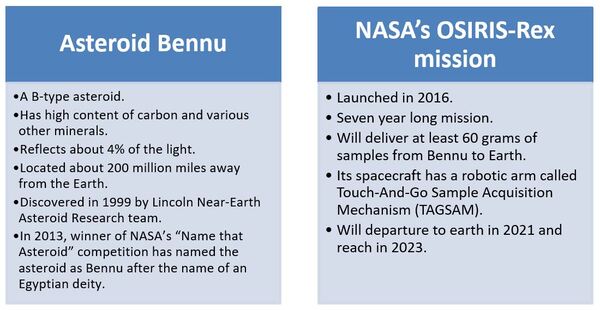
3. Union Minister of Science and Technology and Earth Sciences launches DME fired “Aditi Urja Sanch” unit.
- Union Minister of Science and Technology and Earth Sciences, Dr. Harsh Vardhan has launched Dimethyl ether (DME) fired “Aditi Urja Sanch” unit.
- Along with launching Dimethyl ether (DME) fired “Aditi Urja Sanch” unit at CSIR-NCL (National Chemical Laboratory) Pune, Minister also launched DME-LPG blended fuel cylinders.
- CSIR-NCL has also developed India’s first kind of DME pilot plant. Its capacity is 20-24Kg/day.
- The Minister also launched Special burner unit, which can be used for DME, DME -LPG blended mixtures and LPG combustion.
- Dimethyl ether (DME):
- It is an extremely clean fuel.
- It is synthetically produced.
- Its density is different than LPG. Its cetane number is higher than diesel.
- It has potential to be used to replace propane in LPG. It can be used as fuel in diesel engines.
4. State of Global Air 2020 (SoGA 2020), a new global study, released by HEI.
- According to the State of Global Air 2020, more than 1,16,000 infants in India did not survive their first month due to high particulate matter.
- The report is the first-ever study of the impact of air pollution on infants.
- Out of the total infant’s deaths in India due to particulate matter, more than half were due to outdoor PM 2.5 and remaining due to solid fuels like wood, charcoal, animal dung, etc. used for cooking.
- In 2019, exposure to air pollution for a long time led to the death of 1.67 million in India from heart attacks, diabetes, lung cancer, neonatal diseases, etc.
- India is one of the top ten countries with the highest ozone exposure in 2019.
- According to this report, Air pollution is one of the biggest risk factors for death.
- State of Global Air 2020 was published by the Health Effects Institute (HEI).
- Health Effects Institute is an independent, not-for-profit research institute that is funded jointly by the US Environmental Agency and others.
- Air pollution affects pregnant women and newborn adversely, especially in low and middle-income countries. It leads to low birth weight, preterm birth and deficit child growth.
- Exposure to high levels of air pollution during winters can aggravate the impact of COVID-19.
5. Ministry of Home Affairs allows OCI and PIO card holders to visit India.
- Ministry of Home Affairs (MHA) has allowed all Overseas Citizen of India (OCI) and Person of Indian (PIO) card holders to visit India.
- Along with OCI and PIO card holders, all other foreign nationals have also been allowed by MHA.
- However, those foreign nationals who are on a tourist visa have not been allowed to visit India.
- All OCI and PIO card holders and all other foreign nationals, excluding those on a tourist visa can now enter India by air or water routes through approved airports and seaport immigration check posts.
- They are allowed to enter India by flights operated under Vande Bharat Mission, Air Transport Bubble arrangements or any non-scheduled commercial flights approved by Civil Aviation Ministry.
- Travelers are still required to follow the Ministry of Health and Family Welfare’s quarantine and covid-19 related matters.
- Government has also relaxed visa restrictions and restored with immediate effect all existing visas. Electronic visa, Tourist Visa and Medical Visa have not been restored.
- Overseas Citizen of India (OCI) is a person who has registration under Citizenship Act, 1955.
- Person of Indian (PIO) is a person whose ancestor was Indian and who holds a foreign passport, citizenship or nationality.

(Source: News on AIR)
6. Mandi district of Himachal Pradesh tops the list of 30 districts successfully implementing PMGSY.
- Mandi district of Himachal Pradesh has topped the list of 30 districts successfully implementing Pradhan Mantri Gram Sadak Yojana (PMGSY).
- The list was recently announced by Union Minister for Rural Development, Narendra Singh Tomar. Mandi has constructed the maximum length of roads under PMGSY in 2020-21.
- Himachal Pradesh is ranked second at the national level for construction of roads under PMGSY. It constructed 1104 Kilometres of roads this year from April till date.
- Along with Mandi, six other districts of Himachal Pradesh appear in the list of 30 best performing districts. They are Chamba, Shimla, Kangra, Una, Sirmour, Hamirpur and Solan.
- Pradhan Mantri Gram Sadak Yojana (PMGSY):
- PMGSY was launched in 2000 by the government of India.
- It aims to provide all-weather connectivity to unconnected habitations in the rural parts of India.
- It is a centrally sponsored scheme.
- The Ministry of Rural Development implements PMGSY.
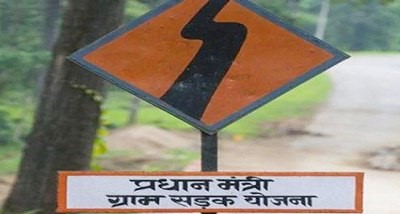
(Source: News on AIR)
7. Labour Minister releases new series of CPI-IW.
- Labour Minister Santosh Gangwar has released a new series of Consumer Price Index for industrial workers (CPI-IW) with 2016 as the base year.
- He also released the first CPI-IW with the base year 2016 for the month of September. It was 118.
- First CPI-IW with the base year 2016 for September is based on data from 88 centres against 78 centres in earlier CPI-IW.
- For calculating CPI-IW for September month, sample size (41,040 families to 48,384) and the number of markets (289 to 317) for collecting retail price data has also been increased.
- Earlier, the base year for CPI-IW was 2001. So, the base year has been revised from 2001 to 2016.
- CPI-IW is used to measure Dearness Allowance to workers in Public Sector Undertakings, Banks and Insurance companies and government employees.
- New series of the CPI for agriculture workers may also be released by August. The base year of CPI for agriculture workers is currently 1986-87.
- CPI-IW:
- It was started in October 1946. It is the oldest CPI available in India.
- It is compiled by Labour Bureau on a monthly basis. Labour Bureau is an attached office of the Ministry of Labour & Employment.
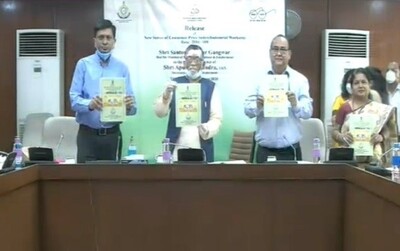
(Source: News on AIR)
8. Members of European Parliament advise France and EU to impose sanctions on Pakistan.
- Three Members of the European Parliament have advised France and EU to impose sanctions on Pakistan.
- The names of members who raised the demand for sanctions are Ryszard Czarnecki, Fulvio Martusciello and Gianna Garcia.
- They wrote a letter to the French government and EU. In the letter, they talked about the incident of genocide by the Pakistani military in Bangladesh.
- The members also said that Pakistan had been again placed in Financial Action Task Force Money Laundering and Terrorism Financing grey list.
- Pakistan-backed militia invaded Jammu and Kashmir 73 years ago on 22 October 1947. Kashmir Youth, named Maqbool Sherwani, is remembered because he was martyred during the invasion.
- European Parliament is a legislative body of the European Union. Along with the Council of the European Union, it approves laws proposed by the European Commission.
9. Scientists discovered a new set of salivary glands in humans.
- Netherlands Cancer Institute Scientists have discovered a new pair of salivary glands between the nasal cavity and throat.
- They found this new gland while studying patients with PET-CT scans to study prostate cancer.
- The new pair of the salivary gland has been proposed as “tubarial glands” as it is found wrapped over the torus tubarius. It is about 1.5 inches in length on average.
- Until now, we only knew three pairs of salivary glands in humans, which are parotid, submandibular, and sublingual.
- The discovery of this pair of glands could explain and avoid radiation-induced side effects such as trouble during eating, swallowing, and speaking. It can also help in cancer treatment.
- Classification of this new pair of the salivary glands is a matter of debate because it could be either a conglomerate of minor glands, a major gland, a separate organ, or a new part of an organ system.
- Salivary glands produce saliva, a substance that moistens and softens food into vertebrates’ oral cavity. It also helps in breaking down of carbohydrates and lubricates the passage of food down from the oro-pharynx to the oesophagus to the stomach.
10. IAF first Woman officer passes away.
- Wing Commander Vijayalakshmi Ramanan, the first woman officer of the Indian Air Force, passed away at the age of 96 in Bengaluru.
- She joined the Indian Army in 1955 for a short-service commission.
- She was the first woman to be commissioned as an Indian Air Force officer and served as a surgeon in several military hospitals.
- She had also provided medical care service during the wars of 1962, 1966, and 1971.
- In 1977, she had received the Vishist Seva medal from the President for her meritorious service.
- She served in the Indian Air Force for 24 years and retired as a wing commander in 1979.
- She was also a trained classical Carnatic musician and an “A Grade” artist with All India Radio.
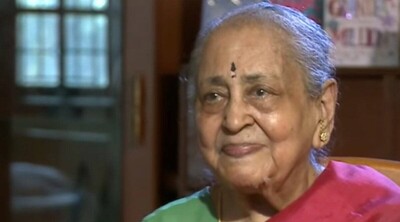
(Source: Indian Express)
11. Dr. Saman Habib elected as a fellow of Indian National Science Academy.
- Dr. Saman Habib, Chief Scientist and Professor has been elected as a fellow of Indian National Science Academy.
- She is known for her research about the malaria parasite, which includes molecular working and function of Plasmodium’s relict plastid, mechanisms of protein translation employed by Plasmodium organelles, human genetic factors, etc.
- Indian National Science Academy:
- It was established in January 1935.
- It is a national academy for Indian scientists in all branches of science and technology.
- The main objective of the academy is to promote, nurture and safeguard the interests of sciences and scientists.
- Chandrima Shaha is the current President of the Indian National Science Academy.
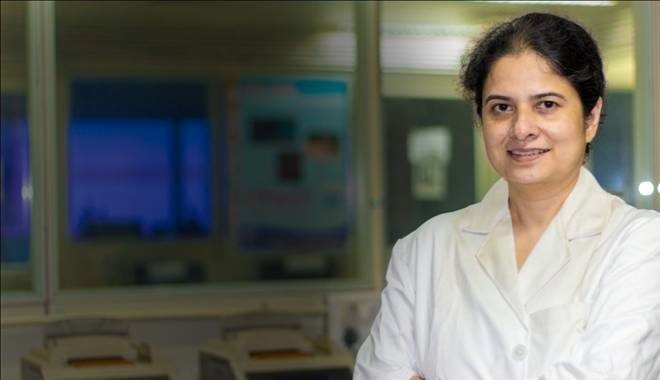
(Source: PIB)
12. Union Minister of State for Culture and Tourism launches “Life in Miniature” project.
- Union Minister of State for Culture and Tourism virtually launched the “Life in Miniature” project.
- This project uses technologies like machine learning and a high-definition robotic camera to showcase the special works art of the several hundred miniature paintings from the National Museum.
- The project is launched in collaboration between the National Museum, the Ministry of Culture, and Google Arts & Culture.
- Online viewers by using the Google Arts & Culture app, can explore miniature paintings of traditional Indian architecture.
- The artwork will be presented on five universal themes of the human relationship with nature, love, celebration, faith and power.
- Machine Learning-based algorithms of the application enable users to explore these miniature marvels in a new way. It will enable viewers to see famous miniature collections of the National Museum, like the Ramayana, Royal Saga, Pahari style paintings in a different way.
- The project reinforces the comprehensive collaboration between the National Museum and Google Arts & Culture that began in 2011.
- The National Museum, New Delhi:
- It was inaugurated on 15 August 1949.
- It is one of the largest museums in India as it holds a variety of articles ranging from pre-historic era to modern works of art.
- It works under the Ministry of Culture.
- In the current pandemic time, it has started many initiatives to engage its visitors through digital platforms.
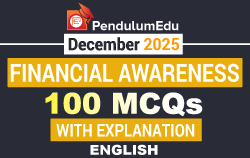
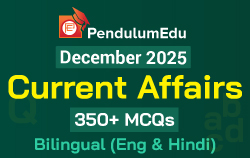

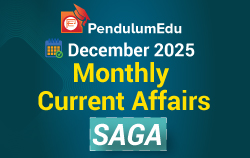

 22 October 2020 Current Affairs
22 October 2020 Current Affairs 








Comments